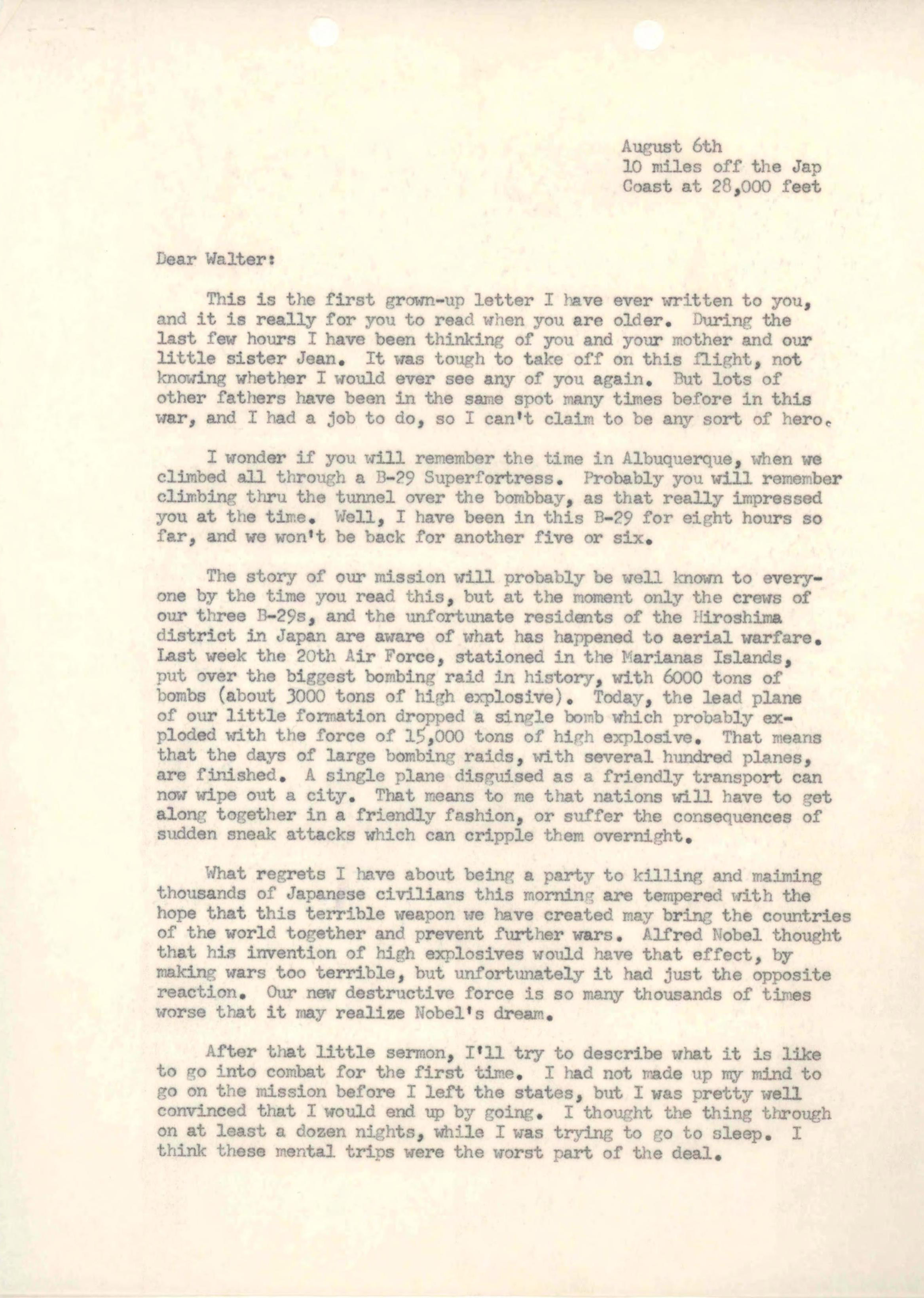
“A rain of ruin from the air, the like of which has never been seen on this earth.”
-President Harry Truman’s statement on the Hiroshima atomic bombing, August 6, 1945
World War II marked the first—and only—wartime use of atomic weapons.
National Archives, Records of the Office of War Information
On August 6, 1945, at approximately 8:15 a.m. locally, the B-29 bomber Enola Gay dropped the atomic bomb “Little Boy” on the Japanese city of Hiroshima. On the ground, the city was alive with morning activity when the bomb detonated in a blinding explosion. As many as 70,000 people were killed instantly. Those who survived the initial blast were hit with a powerful shockwave that leveled nearly every structure within a mile of the impact. It was followed by intense heat that created a firestorm that engulfed the city and claimed even more lives.
Later that day, President Harry Truman informed the American people of the U.S. military’s use of this new form of weaponry and threatened future bombings if Japan did not surrender unconditionally as outlined in the July 26, 1945, Potsdam Declaration. After Japan failed to act, the United States dropped a second atomic bomb, “Fat Man,” over the city of Nagasaki on the morning of August 9. Another 35-40,000 people perished. Soviet forces also invaded Japanese-occupied Manchuria in China that day, further crippling the Japanese military.
Finally, on August 15, the Emperor of Japan issued an Imperial Rescript proclaiming his acceptance of the provisions of the Potsdam Declaration. World War II ended when Japan formally surrendered on September 2, 1945.

National Archives, General Records of the Department of Energy
https://catalog.archives.gov/id/1746778
“A single plane . . . can now wipe out a city”
Luis Alvarez was a physicist who worked on the Manhattan Project, which developed the atomic weapons dropped over Japan. He served as a scientific observer on the Hiroshima mission and drafted this letter to his son describing the bombing during the return flight. In this typed copy of the letter, Alvarez wrote: “What regrets I have about being a party to killing and maiming thousands of Japanese civilians this morning are tempered with the hope that this terrible weapon we have created may bring the countries of the world together to prevent further wars.”
The exact death toll of Hiroshima and Nagasaki bombings is impossible to know. At least 100,000 deaths directly resulted from the attacks. A minimum of another 100,000 people also died from illnesses caused by radiation exposure in the weeks, months, and decades that followed.
Historians continue to debate the United States’ decision to use nuclear weapons to end World War II. Supporters argue that the bombs were necessary to save American lives and bring a swift end to the war. Opponents contend that the bombs were unnecessary to defeat a severely weakened Japan. In 1945, however, the American people overwhelmingly supported the decision to bring an end to the deadliest war in history.
Explore the online collection The Decision to Drop the Atomic Bomb on the Harry S. Truman Library and Museum website.
Find more resources related to World War II records at Archives.gov.
The Featured Document display is made possible in part by the National Archives Foundation, through the generous support of the Ford Motor Company Fund.
